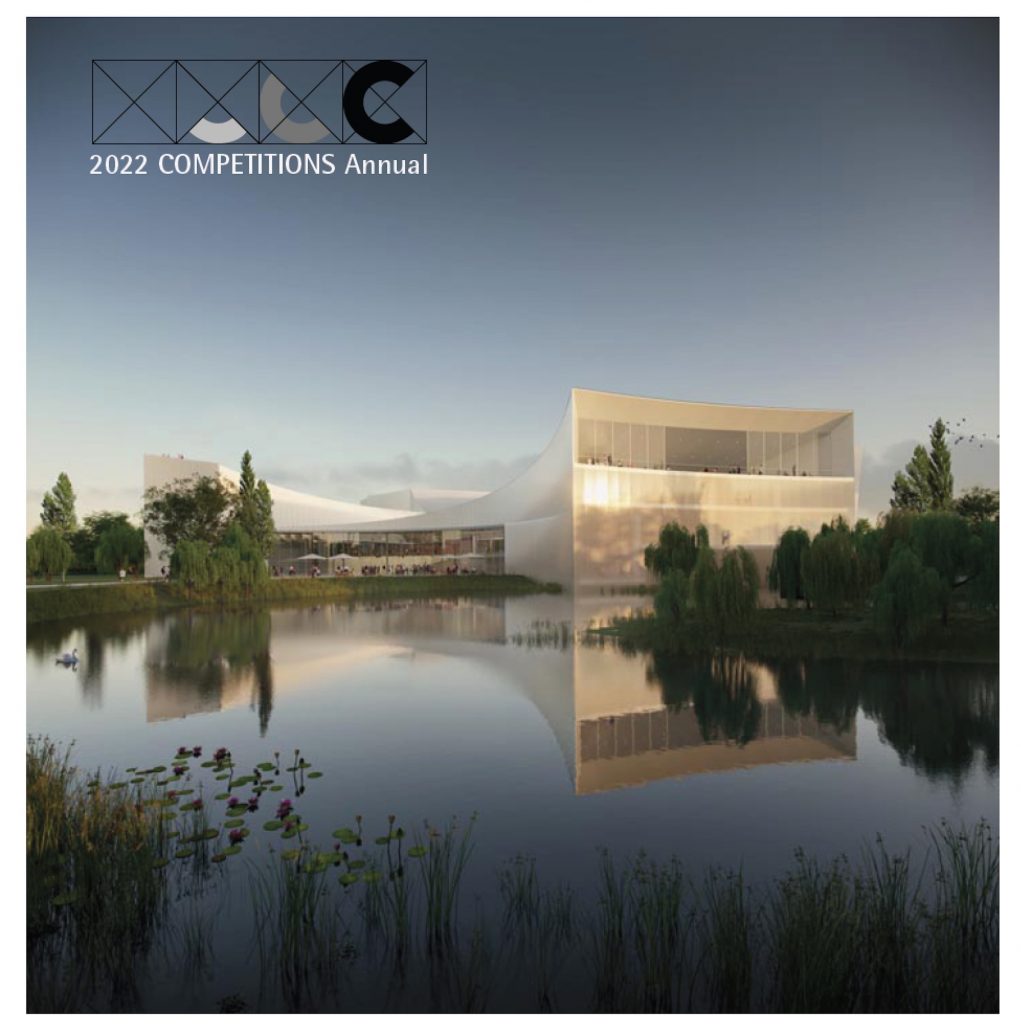Silicon Alley Design Competition: Upgrade of the Nanjing Tobacco FactorySponsor: Nanjing Zhongshan Asset Management Group Co., Ltd.
Organizer(s): Southeast University; People’s Government of Xuanwu District, Nanjing; Nanjing Science and Technology Bureau Type: open, international
Languages: English, Chinese
Fee: None
Timetable:
15 December 2019 – Submissions deadline
20 January 2020 – Final review
Awards:
1st prize – $50,000
2nd prize – $20,000
3rd prize – $10,000
10 Honorable mentions Design Challenge: In 2019, Nanjing put forward an important goal of developing city “silicon alley” and building a new famous city. Derived from Manhattan, New York, “Silicon Alley” is a borderless science and technology park gathering Internet-based and mobile information technology enterprises. Unlike the Silicon Alley which is an innovative technology park built on the edge of city with complete supporting high-end service, the Silicon Alley is a street block of innovative technology industry which mainly focuses on upgrading stock space. Nanjing’s envision to build up a city “Silicon Alley” will promote Xuanwu district as a core area to renovate old factories and campuses, inject new vitality to the scientific and teaching resources of high-learning institutions in the downtown, and build a city “Silicon Alley” with compactness, supplementary functions, improved structure, college-enterprise convergence, integration of industry and the city, and promote active innovation and start-ups. The city “Silicon Alley” represents the development pattern and industry layout of a city from upgrading to innovation. In particular, the design industry represents the important development momentum of “Toward Future, Leading Innovation”. Adhering to this philosophy and based on the historical experience and unique advantages of the forte of architectural design of Southeast University, Nanjing Xuanwu District is committed to gathering quality design resources at home and abroad to Xuanwu’s city “Silicon Alley” with the design industry as its core component. Centering on this goal, five plots around Sipailou Campus of Southeast University (former site of Central University), including old Nanjing Tobacco Factory, Court Plot of Xuanwu District, and Technology Park of Southeast University, are committing to form an innovation industry belt around Southeast University gathering design industry. With the long history of Sipailou Campus of Southeast University and its surrounding area, significant sites of China’s modern architectures and representative cultural relics, and manifestation of the convergence of Chinese and western culture, it carries the important missions of inheriting essence from the history and facing future and aligning with the international practice so as to improve space quality, upgrade industry functions, consolidate and gather resources, and build up an innovative downtown from within the great environment of urban development. Based on that, Xuanwu District selected old Nanjing Tobacco Factory as the start-up project of the innovation and design industry belt around Southeast University and host the global design competition of upgrading old Nanjing Tobacco Factory. The competition is themed on “City Silicon Alley, Design towards Future”. Domestic and international architects and designers are invited to create their works on the former site of Nanjing Tobacco Factory. The park is positioned as a design & start-up park which mainly focuses on architecture design. At the same time, it will also serve Nanjing citizens to build a new business card as a design industry cluster, an urban emerging cultural street, and Nanjing Xuanwu silicon alley. The theme of the design works should be integrated into the urban environment space where they are located, and embody the perfect unity of originality and individuation, so as to achieve a harmonious symbiosis of artistry and design, express the design foresight and highlight the cultural connotation at the same time, so as to improve the quality of living environment and create a better life with design. For more information:
http://www.aki.com.cn/zscssj/?from=&d=&l=en |
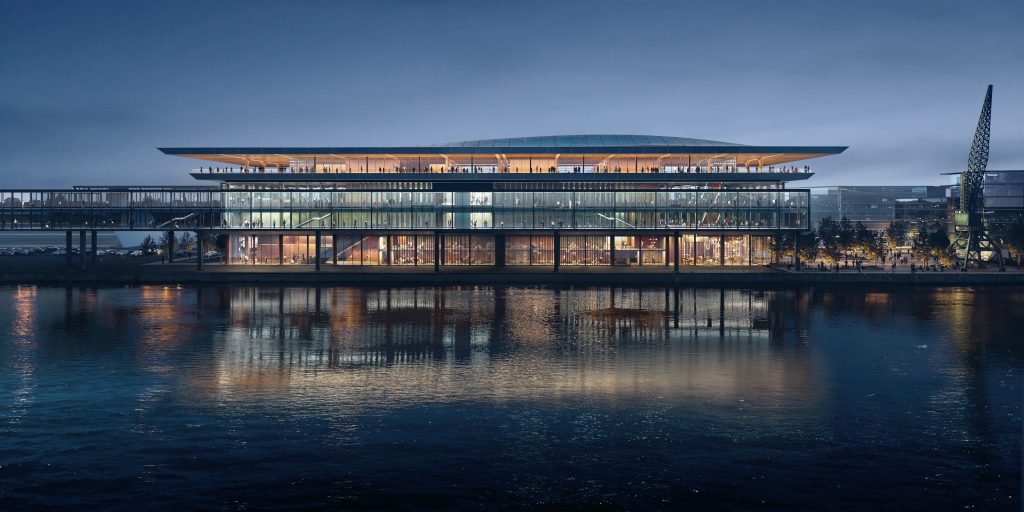
1st Place: Zaha Hadid Architects – night view from river – Render by Negativ
Arriving to board a ferry boat or cruise ship used to be a rather mundane experience. If you had luggage, you might be able to drop it off upon boarding, assuming that the boarding operation was sophisticated enough. In any case, the arrival experience was nothing to look forward to. I recall boarding the SS United States for a trip to Europe in the late 1950s. Arriving at the pier in New York, the only thought any traveler had was to board that ocean liner as soon as possible, find one’s cabin, and start exploring. If you were in New York City and arriving early, a nearby restaurant or cafe would be your best bet while passing time before boarding. Read more… Young Architects in Competitions When Competitions and a New Generation of Ideas Elevate Architectural Quality 
by Jean-Pierre Chupin and G. Stanley Collyer
published by Potential Architecture Books, Montreal, Canada 2020
271 illustrations in color and black & white
Available in PDF and eBook formats
ISBN 9781988962047
Wwhat do the Vietnam Memorial, the St. Louis Arch, and the Sydney Opera House have in common? These world renowned landmarks were all designed by architects under the age of 40, and in each case they were selected through open competitions. At their best, design competitions can provide a singular opportunity for young and unknown architects to make their mark on the built environment and launch productive, fruitful careers. But what happens when design competitions are engineered to favor the established and experienced practitioners from the very outset? This comprehensive new book written by Jean-Pierre Chupin (Canadian Competitions Catalogue) and Stanley Collyer (COMPETITIONS) highlights for the crucial role competitions have played in fostering the careers of young architects, and makes an argument against the trend of invited competitions and RFQs. The authors take an in-depth look at past competitions won by young architects and planners, and survey the state of competitions through the world on a region by region basis. The end result is a compelling argument for an inclusive approach to conducting international design competitions. Download Young Architects in Competitions for free at the following link: https://crc.umontreal.ca/en/publications-libre-acces/ 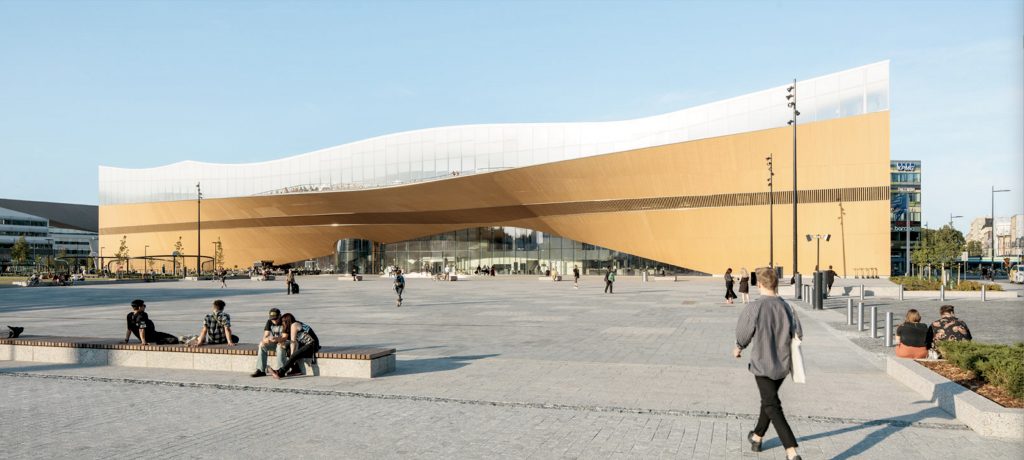
Helsinki Central Library, by ALA Architects (2012-2018)
The world has experienced a limited number of open competitions over the past three decades, but even with diminishing numbers, some stand out among projects in their categories that can’t be ignored for the high quality and degree of creativity they revealed. Included among those are several invited competitions that were extraordinary in their efforts to explore new avenues of institutional and museum design. Some might ask why the Vietnam Memorial is not mentioned here. Only included in our list are competitions that were covered by us, beginning in 1990 with COMPETITIONS magazine to the present day. As for what category a project under construction (Science Island), might belong to or fundraising still in progress (San Jose’s Urban Confluence or the Cold War Memorial competition, Wisconsin), we would classify the former as “built” and wait and see what happens with the latter—keeping our fingers crossed for a positive outcome. Read More… 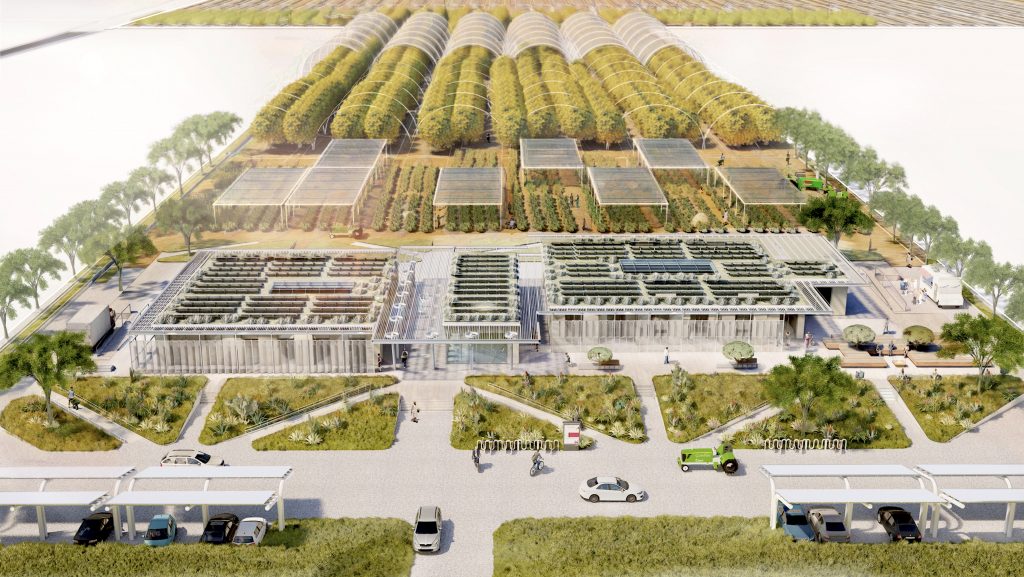
2023 Teaching and Innovation Farm Lab Graduate Student Honor Award by USC (aerial view)
Architecture at Zero competitions, which focus on the theme, Design Competition for Decarbonization, Equity and Resilience in California, have been supported by numerous California utilities such as Southern California Edison, PG&E, SoCAl Gas, etc., who have recognized the need for better climate solutions in that state as well as globally. Until recently, most of these competitions were based on an ideas only format, with few expectations that any of the winning designs would actually be realized. The anticipated realization of the 2022 and 2023 competitions suggests that some clients are taking these ideas seriously enough to go ahead with realization. Read more… 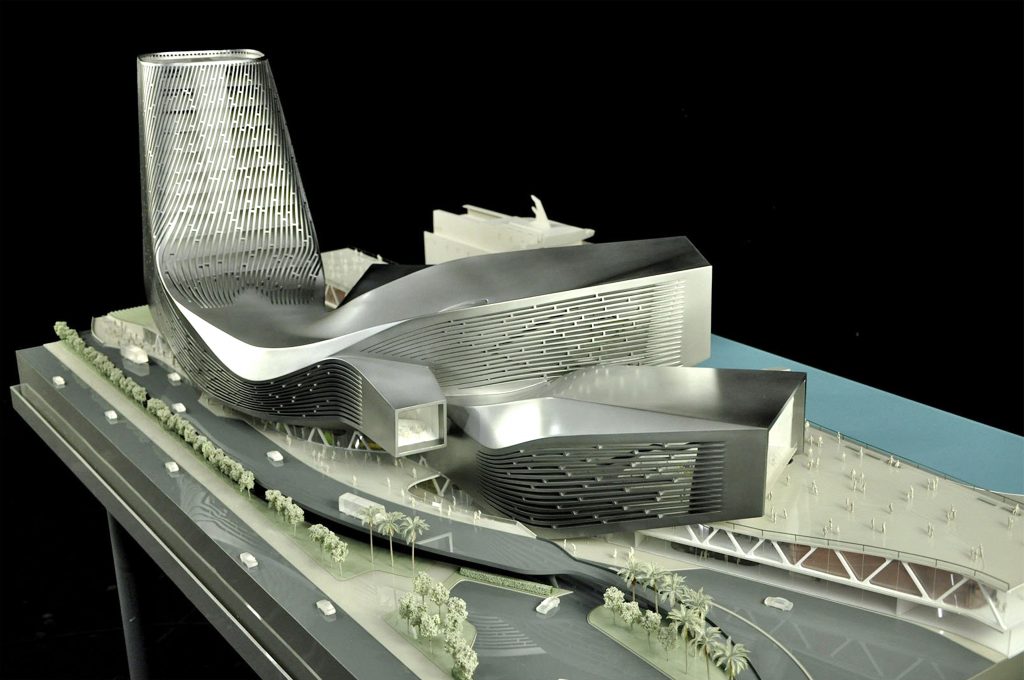
RUR model perspective – ©RUR
New Kaohsiung Port and Cruise Terminal, Taiwan (2011-2020)
Reiser+Umemoto RUR Architecture PC/ Jesse Reiser – U.S.A.
with
Fei & Cheng Associates/Philip T.C. Fei – R.O.C. (Tendener)
This was probably the last international open competition result that was built in Taiwan. A later competition for the Keelung Harbor Service Building Competition, won by Neil Denari of the U.S., the result of a shortlisting procedure, was not built. The fact that the project by RUR was eventually completed—the result of the RUR/Fei & Cheng’s winning entry there—certainly goes back to the collaborative role of those to firms in winning the 2008 Taipei Pop Music Center competition, a collaboration that should not be underestimated in setting the stage for this competition Read more… 
Winning entry ©Herzog de Meuron
In visiting any museum, one might wonder what important works of art are out of view in storage, possibly not considered high profile enough to see the light of day? In Korea, an answer to this question is in the making. It can come as no surprise that museums are running out of storage space. This is not just the case with long established “western” museums, but elsewhere throughout the world as well. In Seoul, South Korea, such an issue has been addressed by planning for a new kind of storage facility, the Seouipul Open Storage Museum. The new institution will house artworks and artifacts of three major museums in Seoul: the Seoul Museum of Modern Art, the Seoul Museum of History, and the Seoul Museum of Craft Art.
Read more… |



























